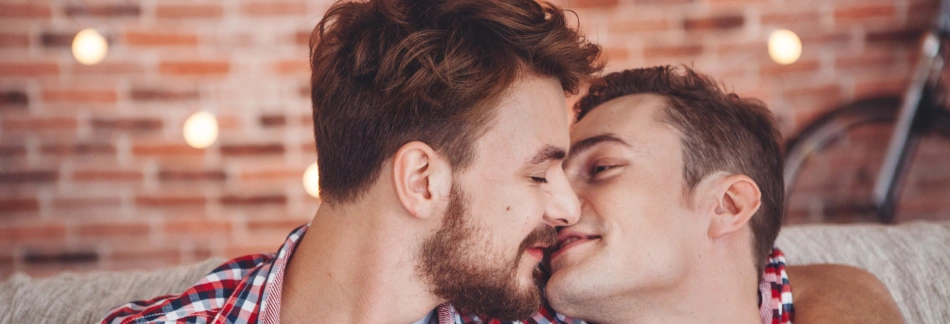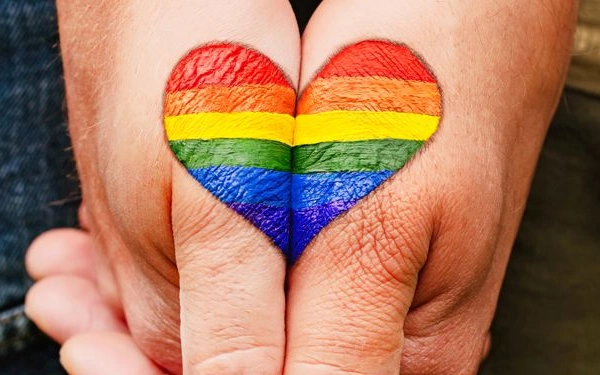
Gay kissing is a form of physical intimacy shared between two same-gender partners.It can be a gentle expression of love and affection, or something more passionate and sexy. Gay couples may kiss on the lips, cheeks, forehead, hands, or other body parts to show their affection for one another.
Kissing helps to bring couples closer together and create a strong emotional bond. It can also be an important way for individuals to explore their sexuality and express their feelings for another person without having to use words.
It’s important to promote positive views of gay relationships, which often don’t get the same recognition as heterosexual ones. While everyone should feel free to express themselves in whichever way they feel comfortable with, public displays of affection such as kissing are generally not accepted in many places around the world. PDA laws vary by country but it’s important to understand the local regulations before engaging in any sort of kissing activities in public spaces.
When it comes to private settings however, there should be no restrictions when two people consensually express love through physical contact like hugging and kissing. Everyone has the right to love who they want and act out those feelings without fear of judgement or persecution from society.
Explaining the History of Gay Kissing
Before diving into the topic of gay kissing, it's important to understand the history behind it. Throughout history, homosexuality and same-sex relationships were often frowned upon and even criminalized in many parts of the world. As a result, gay couples were forced to keep their love hidden and often resorted to secret gestures and codes to communicate with each other.
The act of kissing between two people of the same sex was considered taboo and even scandalous in many societies. It wasn't until the late 20th century that attitudes towards homosexuality began to shift, and the LGBT community started to demand recognition and acceptance.
With the rise of the gay rights movement, gay couples began to openly express their love and affection for each other, including through kissing. Today, kissing between two people of the same sex is widely accepted and celebrated in many parts of the world, although there are still places where it remains taboo or even illegal.
As we explore the topic of gay kissing, it's important to keep in mind the struggles and triumphs of the LGBT community throughout history, and to continue advocating for equality and acceptance for all individuals regardless of their sexual orientation.
Benefits of Gay Kissing from a Health Perspective
Kissing is a universal expression of love and affection, and it has been proven to have numerous health benefits. When it comes to gay kissing, there are unique advantages that are often overlooked. From a health perspective, here are some benefits of gay kissing:
- Boosts Immune System: Kissing is known to boost the immune system by increasing the production of antibodies that fight off infections. This is especially important for the LGBTQ+ community, who may be at a higher risk of contracting certain infections.
- Reduces Stress: Kissing releases oxytocin, also known as the "love hormone," which can reduce stress levels and improve overall mood. This is particularly beneficial for those who may face discrimination or prejudice, as it can help alleviate the negative effects of these experiences.
- Improves Oral Health: Kissing can stimulate saliva production, which helps to wash away bacteria and food particles in the mouth. This can lead to improved oral health and a reduced risk of cavities and gum disease.
- Burns Calories: Kissing can also be a form of exercise, as it can burn up to 2-3 calories per minute. While this may not seem like much, it can add up over time and contribute to overall physical health.
- Promotes Intimacy: Kissing is an intimate act that can help strengthen emotional bonds and improve relationships. This is especially important for those in same-sex relationships, who may face additional challenges in society and benefit from the support and connection that kissing can provide.
Overall, gay kissing has numerous health benefits that should not be overlooked. From boosting the immune system to promoting intimacy, it is an important aspect of overall health and wellbeing.
The Significance of Gay Kissing as an Act of Representation and Affirmation
Gay kissing is not just a physical act, but also a powerful form of representation and affirmation for the LGBTQ+ community. It is a way for individuals to show their love and affection for one another, while also breaking down societal barriers and challenging heteronormative norms.
For many LGBTQ+ individuals, public displays of affection, such as kissing, have historically been met with discrimination, violence, and even legal consequences. However, as society has become more accepting and inclusive, gay kissing has become a symbol of love and acceptance.
When gay kissing is depicted in media and popular culture, it can have a profound impact on the LGBTQ+ community. It can create a sense of visibility and representation for individuals who may feel marginalized or invisible in their daily lives. It can also serve as a form of validation and affirmation, reminding individuals that their love is just as valid and important as any other.
Furthermore, the act of gay kissing can also serve as a challenge to heteronormative norms and expectations. It can disrupt the idea that only heterosexual couples are allowed to show affection in public and can help break down stereotypes and misconceptions about the LGBTQ+ community.
Overall, gay kissing is a powerful act of representation and affirmation for the LGBTQ+ community. It can create visibility, validation, and challenge societal norms, ultimately helping to create a more inclusive and accepting society.
Challenges Faced by Gay Couples in Society
Despite the progress made in recent years towards LGBTQ+ acceptance and equality, challenges still exist for gay couples in society. One of the most significant challenges is discrimination and prejudice. Many individuals and institutions still hold negative attitudes towards homosexuality, which can lead to discrimination in areas such as employment, housing, and healthcare.
Another challenge faced by gay couples is the lack of legal recognition and protection. In many countries, same-sex marriage is still not legal, which means that gay couples do not have the same legal rights and protections as heterosexual couples. This can lead to issues with inheritance, property rights, and child custody.
Gay couples also face challenges when it comes to starting a family. Adoption and surrogacy can be difficult and expensive, and there are still many countries where same-sex couples are not allowed to adopt or have children through surrogacy.
Finally, many gay couples face challenges when it comes to social acceptance. While attitudes towards homosexuality have improved in recent years, there are still many people who do not accept or understand same-sex relationships. This can lead to feelings of isolation, anxiety, and depression for gay couples.
Overall, while there has been progress towards acceptance and equality for gay couples, there are still many challenges that need to be addressed. It is important for society to continue to work towards creating a more inclusive and accepting environment for all individuals, regardless of their sexual orientation.







